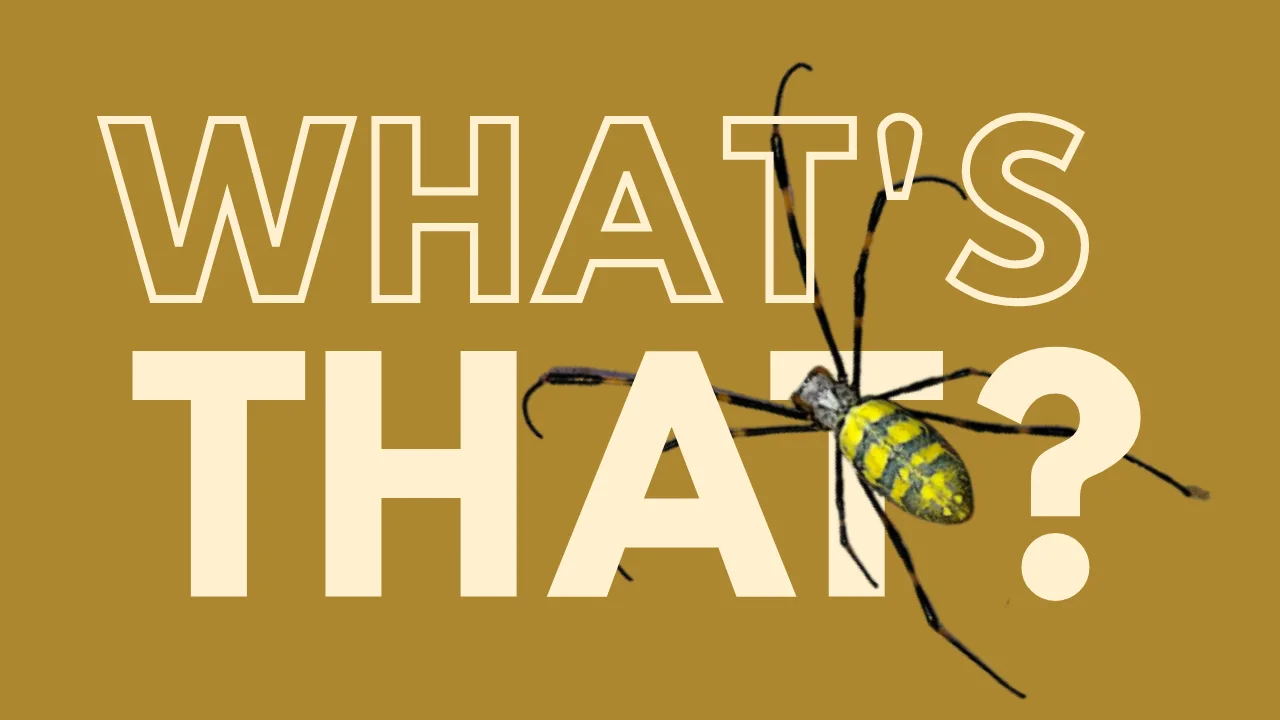
Finally, an invasive species that isn't so bad: the (giant) Joro spider
Yes, they're big. Yes, they're everywhere (in Georgia). But other than that, Joro spiders aren't so bad, experts say.
Draping neighbourhoods with webs as thick as 3 metres, clinging to porches, branches, and vegetable patches, millions of invasive Joro spiders (Trichonephila clavata) have descended upon 25 counties in the U.S. state of Georgia.
The giant spiders - noted for their long legs and bright yellow abdomens - are about 7 cm long, originally from East Asia and first spotted in North America in 2014.
The spider's population has grown steadily south of the border in the years following, with 2021 being one of the worst on record.
According to University of Georiga (UGA) entomologist Will Hudson, as many as 300 Joros recently blanketed the porch of his home, rendering it unusable.

Joro spides are easily identified by their long legs and bright yellow abdomens. Image courtesy: (Melissa Noguchi/Wikipedia. Public domain.)
“Last year, there were dozens of spiders, and they began to be something of a nuisance when I was doing yard work,” he said in a press release.
“This year, I have several hundred, and they actually make the place look spooky with all the messy webs — like a scene out of 'Arachnophobia.'"
The spiders likely hitchhiked their way into North America via a shipping container. Entomologists say residents should get used to them because they "aren't going anywhere."
'NOT SO BAD'
But unlike other invasive species, which can outcompete native wildlife and damage the environment, Rick Hoebeke of Georgia Museum of Natural History, who first identified the Joro spider in Georgia, says this species isn't so bad. For starters, UGA specialists haven't seen any detrimental effects on native species due to the presence of Joros, aside from them being a nuisance to humans.
And the spiders - which are striking due to their bright colours - act as natural pest control for mosquitoes and other biting insects, reducing the need for chemical pesticides. While Joros can bite people, they are unlikely to do so because they not aggressive. For that reason, experts classify them as not harmful to humans.
And here's one good thing about their size: They're typically big enough that they won't sneak up on you, making them easier to avoid.
Most Joros will have died off by late November, leaving behind egg sacs that will hatch in spring.
While the spiders are booming this year, experts suspect Mother Nature will even out the numbers by next season.











